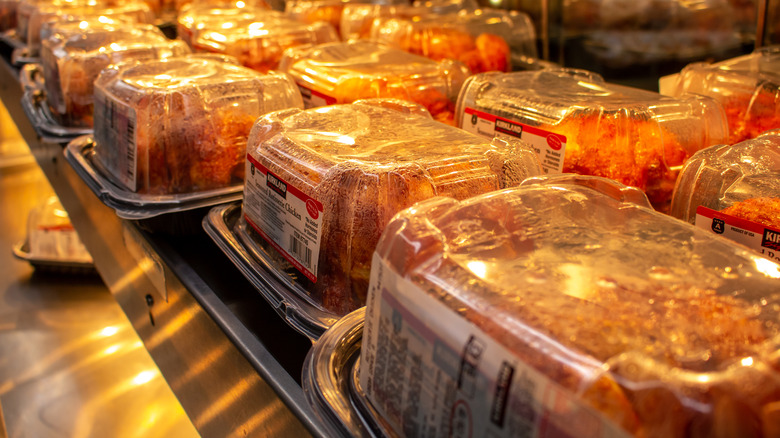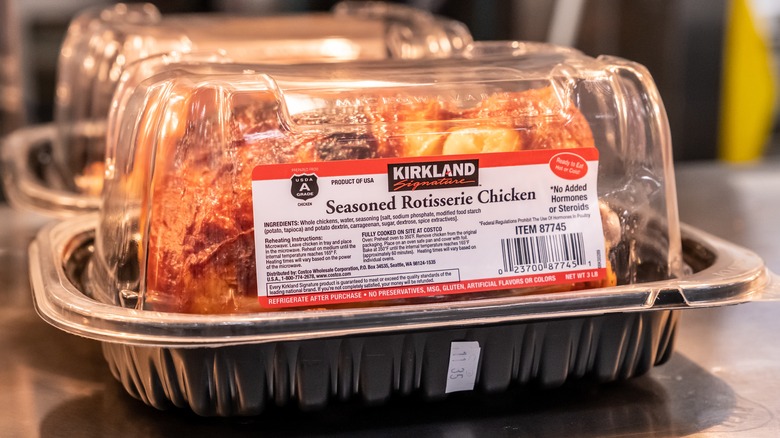What Does It Mean When Costco's Rotisserie Chicken Is Less Than $4.99?
One of the reasons for Costco's enduring popularity is how stable the pricing of goods sold at its warehouses are. A good example of this is, of course, its legendary rotisserie chicken, which has largely held steady at $4.99 per bird since 2009. Here's where things get interesting though: Some shoppers have spotted these same chickens priced even lower — around $4.30 or $4.50 — with no sale signs in sight. Naturally, people started asking questions about these oddly underpriced rotisserie chickens. While the company hasn't officially addressed it, we have a pretty good theory for these suspiciously cheap birds: They're simply underweight!
Reading into the recipe, you may notice that there's a line saying the "unit price" for rotisserie chickens is $1.66 per pound – essentially, the chickens are sold by weight. The standard $4.99 price assumes that it's a three-pound bird, but when a chicken weighs less, Costco seems to adjust the price accordingly to keep things fair. One Redditor found a chicken priced at $4.58, which weighed 2.76 pounds. Taking the per-pound price and multiplying it by the weight, the discounted price adds up perfectly.
Does Costco ever sell sub-par chicken at a discount?
Costco is pretty particular about the chickens it sell. Aside from raising the chickens itself on a farm in Nebraska and not relying on outside vendors, Costco rotisserie chickens are only sold for two hours at a time. Once this window is exceeded, any unsold chickens are pulled off of the shelves and re-processed into packaged foods for the deli counter instead. Policies like these make the risks of sub-par chickens popping up on the display pretty low.
This isn't to say that the company is foolproof, however. In the past, there were reports of rotisserie chickens having soap-like flavors due to a preservative. Then, there was an infamous case of rotisserie chicken sporting green-colored flesh. Fortunately for the consumer (and for Costco's reputation), the green tint was the result of a condition called ischemic myopathy. As icky as it may look, the USDA confirmed that it's just a visual defect and isn't a food hazard.
So while there are rough spots here and there, Costco's rotisserie chickens have had a decent track record so far. Of course, it's still a good idea to pay close attention to each chicken you pick up to make sure it's at its freshest but, generally speaking, there's little to worry about when you come across a chicken that's priced lower than usual. Take it as a lucky deal as long as you don't mind the lower weight!

